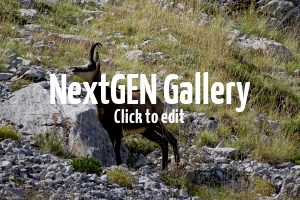During the peak of the last global glacial extent (c. 22,000 – 18,000 years ago), ice-sheets capped the W. Pindοs high altitude (> 2500m) summits and karst plateaus enhancing erosion of the limestone and flysch bedrock and discharging massive water volumes into the Vikos – Voidomatis – Aoos river system. Natural resources were then scarce as was human activity.
It is only when the climate took an upturn trend (17,500 years ago), triggering the melting of ice and the expansion of pioneer woodland and of wild animal mountain species, that palaeolithic bowmen chose to explore systematically the newly available habitat. For the next 7 millennia, families and/or hunting task-groups, every spring/summer, used as temporary abodes fault-controlled rock overhangs (e.g. Klithi, Boila, Megalakkos) at the sidewalls of the gorge. There they lit fires for warmth, cooking, company and protection against carnivores (bears, wolves, foxes and lynx).
They scheduled expeditions on the steep slopes to capture agile wild caprids, ibex and chamois, the latter especially valued for its soft hide, fished in the river and trapped beavers, hares etc. Equipped with sophisticated technologies, they collected flint (chert) pebbles from the riverbanks or used animal bones to manufacture tools and weapons (e.g. arrowheads, knives, scrapers, borers, needles).
With beads made of fresh water shells and herbivore teeth, and natural red ochre they decorated clothes and marked their bodies.
As the forest grew thicker, reaching even the highlands by c. 9.000 years ago, the gorge environment became less rewarding and transit hunters provisioned venison, fat, marrow, antlers and hides from migrating deer herds fording the river in the nearby Konitsa plain and traversed ravines for adventures beyond the mountain chain.
Visitors can follow a designated itinerary along the Voidomatis river (from the Aristi / Papigo bridge to the Klithonia bridge and vice versa) with information on the palaeolithic cultures and the pleistocene ecology.
